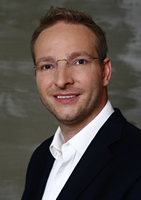 Much has been talked about Sega of Japan (SoJ) and Sega of America (SoA), their different business practices and the clashes in culture. While the rivalry between those two usually stands in the foreground, people tend to overlook that there was also a third branch that handled the European side in business. Sega of Europe (SoE) was seated in London, U.K. However, since Europe is made up of many different countries, each with their own market practices, culture and idiosyncrasies. There were also many subsidiaries in key locations that also had a certain degree of liberty when it came to marketing or even developing SEGA products.
Much has been talked about Sega of Japan (SoJ) and Sega of America (SoA), their different business practices and the clashes in culture. While the rivalry between those two usually stands in the foreground, people tend to overlook that there was also a third branch that handled the European side in business. Sega of Europe (SoE) was seated in London, U.K. However, since Europe is made up of many different countries, each with their own market practices, culture and idiosyncrasies. There were also many subsidiaries in key locations that also had a certain degree of liberty when it came to marketing or even developing SEGA products.
One of the most important console markets within Europe right after the UK is Germany, so establishing their consoles in that location was very important for SoE. Thus in 1992, during the apex of the Sega Mega Drive, Sega of Germany (SoG) was founded in Hamburg in order to further develop the market there. Practically right from the start up until his departure in 1996, Torsten Oppermann was overseeing SoG’s local efforts as Marketing Director. As such, he not only had to face the freshly arrived competition in form of the Super Nintendo, but also handle the German launch of the Sega Saturn.
After spending many years in the games industry, Mr. Oppermann is currently founder and managing director of the social media and communications agency DELASOCIAL. When Sega-16 contacted him, he was kind enough to talk with us about his time at SoG, its relationship with the other branches within the corporation, and the challenges he had to face in this particular market during this eventful time.
Sega-16: Before starting out as Marketing Director at Sega of Germany you were a video game editor at the German game magazine ASM between 1988 and 1990. How did the switch in careers come to pass?
Torsten Oppermann: Working in an editorial department just didn’t feel as exciting anymore. I first took a detour via German software house United Software and another video game magazine, Gamers, before I ended up at Sega in 1992, specifically May 11, 1992.
Sega-16: What was the situation for Sega in Germany during the four years (1992 – 1996) you spent there? Where did the Mega Drive, Master System and Game Gear stand in the market, when compared to the competition?
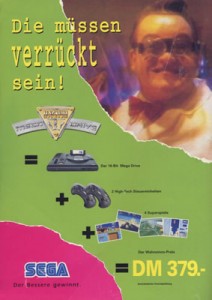 Torsten Oppermann: We were always in the difficult situation that, while Europe-wide we were strongest in England, Nintendo did strongest here in Germany. One reason was probably that while the Sega of Europe HQ was in London, the Nintendo HQ was in Frankfurt/Main. So for the most part, we were behind Nintendo in terms of market share. There were occasionally weeks though where we got the edge when comparing the direct sales, especially when our “Magnum-Set” including four games for DM 379 hit the market in ’92 (about $240 U.S. back then – ed). Overall though, locally we were behind Nintendo.
Torsten Oppermann: We were always in the difficult situation that, while Europe-wide we were strongest in England, Nintendo did strongest here in Germany. One reason was probably that while the Sega of Europe HQ was in London, the Nintendo HQ was in Frankfurt/Main. So for the most part, we were behind Nintendo in terms of market share. There were occasionally weeks though where we got the edge when comparing the direct sales, especially when our “Magnum-Set” including four games for DM 379 hit the market in ’92 (about $240 U.S. back then – ed). Overall though, locally we were behind Nintendo.
Sega-16: Was there a big rivalry with home computers? Platforms like the Atari ST or the Commodore Amiga were popular in Europe, especially in Germany.
Torsten Oppermann: Personally, I was a great Atari ST fan, but compared to the ST and the Amiga, the Mega Drive simply was much better, particularly because of the cool games from Japan and the simple handling.
Sega-16: Where did Sega of Germany stand within the corporation? Was there a lot of communication with the HQ in London? Or with Sega of America or Sega of Japan?
Torsten Oppermann: We were a very important country. Within Europe, Germany and France usually “fought” for second place within our ranking. U.K. was clearly number one. Here in Hamburg, we had sales figures of more than DM 400 million during our best days and 120 people on staff. I had a lot of contact with both SoJ and SoE during those days. Personally, I believe we had for a long time too little communication with Sega of America though. This, I pro-actively tried to change, even with tricks. For example, I did hire the same public relations agency here in Germany that SoA used in the U.S. That way I got the information I needed quicker, and we didn’t have to reinvent the wheel.
Sega-16: So the flow of information between SoA and SoE wasn’t particularly well? Or how did that manifest specifically?
Torsten Oppermann: There was a strict hierarchy in terms of communications: The branches SoJ → SoE → SoG and separately SoJ → SoA. So, Sega of America and Sega of Europe didn’t really get in touch with one another. From my point of view that was very unwise back then.
Sega-16: How much liberty did you have in your work and your course of actions?
Torsten Oppermann: In regards of PR, we were pretty much at liberty. Less though in terms of TV ads. Starting with 1994/95, the U.K. pretty much dictated what had to go on there, which wasn’t always a sensible approach. Remember “Pirate TV?” (Sega U.K. campaign, German version)
Sega-16: In our interview with former SoA-CEO Tom Kalinske, he spoke at length about the strong rivalry between the American branch and Sega of Japan. Did you ever get to feel these tensions as well?
Torsten Oppermann: This rivalry existed particularly from 1994/1995 onward, when it was clear that a new generation was looming on the horizon, and the Americans wanted a new console that would cost about $200-$300. At that time however, Japan was already working on the Saturn, and everyone knew that this console would be rather expensive (in production). That second CPU in particular made the Saturn so expensive, since it was originally designed to be a 2D console.
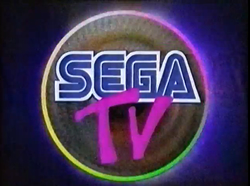
Sega-16: How was the Mega Drive marketed in Germany? There was this series of TV ads that was obviously inspired by the movie Wayne’s World. How did that come to pass? Was that a German idea?
Torsten Oppermann: Oh my god, that came out of Germany! From the agency that handled things back then.
Sega-16: There were a couple of games (like Soleil or Landstalker) that were also translated for the German market. Did you get a glimpse at the way the localization was handled? Who decided what games would get a German translation, and at what point where the decisions made?
Torsten Oppermann: Back then I was working in Marketing and Product Management, and the bulk of those decisions were made by our department. Landstalker in particular – Japan didn’t want the localization at first. So we controlled things from here and let Factor 5 (back then still a German studio, now they’re in the U.S.) handle both the translation and the source code adaptation. Michael Hengst, now a games producer but back then leading editor (and later editor-in-chief) of the German video game magazine Power Play, was the biggest fan of the game and did heavily encourage us to translate it.
Sega-16: Video games in Germany often had to deal with censorship. The BPjS (“Bundesprüfstelle für jugendgefährdende Schriften,” a federal institution in charge of checking whether certain pieces of media were liable to corrupt the youth – ed.) often put games on an index, meaning that these games couldn’t be advertised or covered in magazines and only be sold under the counter to adults who specifically asked for them. This resulted in an effective ban for said game. Did you ever run into trouble with the inspecting authority? How did you deal with that issue?
Torten Oppermann: Sega once got into trouble with the BPjS over Golden Axe, the Amiga version in particular was deemed too violent and was indexed. During my time, we always tried to properly adapt the games in advance, in order to avoid that (before that, the Genesis versions of Shadow Dancer and Rambo III were also deemed too violent by the BPjS – ed.). For example, we always tried to get blood removed from the games. I can’t recall exactly which titles were treated that way, though. Third parties like Acclaim or Konami did the same, though they handled that independently, Konami, for example, by turning Castlevania: Bloodlines into A New Generation or Contra: Hard Corps into Mega Probotector.
Sega-16: The Ottifants was a German license owned by German comedian Otto Waalkes, which were turned into games for Game Gear, Master System and Mega Drive by British company Graftgold. Do you know how this came to pass?
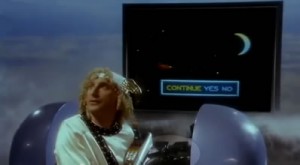 Torsten Oppermann: Sure. We had some product placement in Otto’s fourth movie (Otto: der Liebesfilm). After that, we talked with Otto about a game. He is a big gamer himself. I also visited the development team with him. Unfortunately, they were imposed on us by Sega of Japan. I would have preferred a German team to create the game, but honestly, back then there were hardly any developers for consoles in Germany.
Torsten Oppermann: Sure. We had some product placement in Otto’s fourth movie (Otto: der Liebesfilm). After that, we talked with Otto about a game. He is a big gamer himself. I also visited the development team with him. Unfortunately, they were imposed on us by Sega of Japan. I would have preferred a German team to create the game, but honestly, back then there were hardly any developers for consoles in Germany.
Sega-16: Were there any other developments out of the German market, like ports or pitches by German developers or special plans that were never executed, that you know of?
Torsten Oppermann: Well, there was Tetris! The rare one, by Tengen, and a very cool Bomberman for eight players, which was developed by the German team Factor 5. Unfortunately, Hudson never chose to publish it, which is too bad, because to me it was the best Bomberman game of all time!
Sega-16: Some German magazines, like the Sega Magazine by Computec, also featured the Sega Nomad, though the device was never released in Europe. Were there any plans for marketing the handheld, and if so, when and why were they discarded?
Torsten Oppermann: We would have done it, but it was too expensive and too late in the life cycle, not to mention its battery life and weight…
Sega-16: What did you think of the Mega CD and the 32x? How did these extensions fare in Germany?
Torsten Oppermann: Regrettably, both the Mega CD and the 32X were a huge flop.
Sega-16: The launch of the Sega Saturn also happened during your tenure. The U.S. launch in particular is today considered rather infamous. How was the situation in Germany? How could you approach the marketing? Was it more difficult or actually better that the console arrived a few months later in Europe?
Torsten Oppermann: Unfortunately, it was very complicated. We knew that the recommended retail price needed to be at DM 599, or even better at DM 499 ($420/$340 U.S. in 1995 – ed.). However, production costs didn’t allow that. That was pretty much already the beginning of the end for the Saturn. Also, at the start we didn’t have any truly awesome games. Virtua Fighter 2 and Sega Rally were released later, and those were really good, but by then we were lacking the money for marketing.
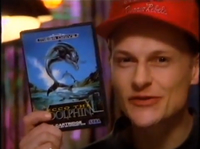 With a few tricks we managed to get the Saturn to market in the DM 649-699 range ($450-$490 U.S. – ed. ). The main ploy was that retailers had to purchase at least three games along with the console. That didn’t sit so well with them, but sadly it was the only possibility to get the console to market with a halfway decent RPR. With its high prime cost, we would otherwise have had to set the recommended retail price at DM 749 to 799. That was basically the core problem with the Saturn: too high production and buying costs, with a worse GPU when compared to the PlayStation at the same time. On top of that, complicated development due to the “crutch” of having two SH2 CPUs.
With a few tricks we managed to get the Saturn to market in the DM 649-699 range ($450-$490 U.S. – ed. ). The main ploy was that retailers had to purchase at least three games along with the console. That didn’t sit so well with them, but sadly it was the only possibility to get the console to market with a halfway decent RPR. With its high prime cost, we would otherwise have had to set the recommended retail price at DM 749 to 799. That was basically the core problem with the Saturn: too high production and buying costs, with a worse GPU when compared to the PlayStation at the same time. On top of that, complicated development due to the “crutch” of having two SH2 CPUs.
Sega-16: Any other Sega-anecdotes you remember well and you’d like to share?
Torsten Oppermann: Oh god, there are so many! That would definitely go beyond the scope of this interview, but I definitely had a great time there, complete with ups and downs, and deep within I’m still attached to the brand.
Our thanks to Mr. Oppermann for taking the time to chat with us.

Recent Comments